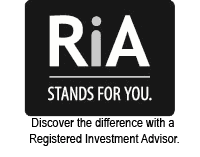For high earners, minimizing income taxes now and into retirement can be a challenge. Tax strategies exist that can help ease these tax burdens while offering greater retirement tax efficiency. Read more to learn the best retirement tax strategies for high income earners!
Work Smart: 5 Tax Strategies High Income Earners Should Be Leveraging.
Beginning with the Tax Cut and Jobs Act (TCJA) of 2017 our Congress has been active at passing legislation that has had material changes to our tax code affecting both retirement and tax planning strategies. The SECURE Act passed in December 2019 included several provisions. One of the provisions increased the age for Required Minimum Distributions (RMDs) from age 70-1/2 to age 72 in 2020.
Additionally, our federal government has developed a voracious appetite for tax revenue. This is the result of running persistent annual deficits that have only increased with recent pandemic spending. The current marginal tax rates created by the 2017 TCJA expire at the end of 2025. It would be safe to assume that rates have nowhere to go but up, in part, to offset the spending and budget deficits our government has accrued.
Why mention all of this? If you’re a high income earner, the challenge of minimizing income taxes both now and into retirement usually becomes harder. This likely reality makes leveraging current tax-efficient strategies today, even more important.
So, what strategies should a high earner be most focused on? Let’s review five of the most highly effective retirement tax strategies for high income earners.
Take Advantage of Pre-Tax Savings Opportunities
One out of the many retirement tax strategies for high income earners includes taking advantage of pre-tax savings opportunities. High income earners not only have to contend with higher marginal income tax rates, but also the potential of paying Medicare surtax and net investment income tax (NIIT). The Medicare surtax is an extra 0.9% Medicare tax that applies to wages, compensation, and self-employment income above certain thresholds (2022 Medicare surtax thresholds). It does not, however, apply to income items included in net investment income. Medicare applies, NIIT, a 3.8% tax to the lesser of your net investment income or the amount by which your gross income (MAGI) with modifications and adjustments exceeds certain thresholds based on filing status.
You may be subject to a higher marginal tax rate or additional Medicare’s additional taxes, or both. No matter what, it may behoove you to defer income on a pre-tax basis. The good news is that you likely have several opportunities to do this:
Qualified Retirement Plans
Odds are that your employer offers some sort of qualified retirement plan like a 401(k), 403(b), SIMPLE-IRA, or 457 plan. In 2022, these plans allow participants to defer up to $20,500 ($27,000 for those over age 50) on a pre-tax basis each year. Contributions into qualified retirement plans not only significantly reduce your taxable income, and therefore current year income taxes, but they also serve as an income tax-deferred investment vehicle. You won’t pay taxes on these contributions and their growth in value until you make qualified withdrawals (age 59 ½ or later) during retirement.
While qualified retirement plan contributions can help to reduce taxable income in the current year, please keep in mind that you will eventually have to pay taxes on these deferrals. It’s important to weigh the benefit of these income deferral opportunities against reality. The reality is that this income will be recognized and taxed in retirement. When making this decision, consideration should be given to your anticipated retirement income level. Consideration should also be given to expected future federal tax rates once you are retired. Opportunities do exist to instead, pay taxes today for the benefit of tax-exempt withdrawals in retirement. These will be a part of the discussion later.
Health Savings Accounts
Health Savings Accounts (aka, HSAs) are a potentially very valuable savings vehicle for high income earners. HSAs are triple tax-advantaged accounts. In order to qualify for HSA contributions, you must be a participant in a high deductible health plan. You must also not have coverage by any other health insurance, including Medicare. Annual contributions (2022) have limits set at $3,650 for self-only and $7,300 for families with a $1,000 “catch-up” contribution for individuals over age 55.
The beauty of these accounts for high earners? Contributions are made pre-tax, reducing your taxable income in the current year, earnings grow tax-deferred, and distributions for qualified medical expenses are tax-free. That’s hard to beat.
529 College Savings Plans
529 college savings programs allow individuals or married couples to save for a beneficiary’s future college education with some significant tax benefits. Most states offer a tax deduction for contributions made to their 529 plan. For the 2022 tax year, in Wisconsin, the maximum deduction for most filing statuses is $3,560 ($1,780 for married filing separate and divorced parents). Some states like Indiana, offer a tax credit for contributions, which is a dollar-for-dollar reduction in taxes owed.
To take advantage of 529 plan tax benefits, generally, you must contribute to the state’s plan in which you live. Remember that these benefits help reduce your state taxable income (or state income tax if they offer a tax credit). The benefits do not reduce your federal taxable income.
Tax Deductible IRA Contributions
Most high income earners likely participate in an employer-sponsored qualified retirement plan. If so, they are likely precluded from making tax-deductible IRA contributions because their modified adjusted gross income (modified AGI) exceeds the deductibility phaseout thresholds. If you don’t have coverage by a retirement plan at work, you likely are eligible to make a tax-deductible IRA contribution. IRA contributions have limits set at $6,000 ($7,000 for those age 50 and older) in 2022. Be sure to consult with your accountant or financial advisor to determine your eligibility for making a tax-deductible IRA contribution.
“Other” Income and Income Tax Deferral Opportunities
Non-Qualified Deferred Compensation
High income earners often “max out” the pre-tax savings opportunities presented in the previous section. If that is the case, other strategies to consider, if available, include non-qualified deferred compensation plans like a 457(f) or Supplemental Executive Retirement Plan (SERP), also known as a “top hat plan” or “golden handcuffs”. These plans are a way for high earners to reduce taxable income in the current year while building an added income source for further funding retirement.
Other Tax-Deferred Savings Vehicles
Though not a way of reducing current taxable income, and generally only after you have maxed out contributions to the tax-deferred plans listed above, contributing funds to a cash-value life insurance policy or a deferred income annuity can be a way of deferring federal and state income tax. Contributions to a deferred income annuity or cash-value life insurance policy grow tax deferred until withdrawn in the future. Once annuitized, payments from a deferred income annuity are taxed according to an exclusion ratio. This means a portion of each payment is return of principal and the balance, earnings taxed as ordinary income.
Charitable Giving & Aggregated Deductions
Donate Highly Appreciated Assets
Fulfilling charitable objectives can be another great way for high income earners to reduce taxable income and avoid future large taxable gains. Donating low-cost basis, highly appreciated assets to a qualified charity or a charitable remainder trust (CRT) will help to avoid incurring large capital gains taxes, while also receiving a deduction based on the current value of the gift.
Qualified Charitable Distributions
For retirees who are subject to required minimum distributions (RMDs) and looking to reduce their income tax burdens a qualified charitable distribution (QCD) could be a great fit. QCDs apply to retirees aged 70 ½ and older who are taking RMDs from traditional IRAs, inherited IRAs, or inactive SEP-IRAs and SIMPLE-IRAs. Is income not an issue? Retirees who meet the age requirement can instead directly transfer their RMD (up to $100,000) to a qualifying charity. In doing so, they meet their distribution requirement. They also reduce their taxable income and fulfill any charitable giving objectives that they may have. The reduction in taxable income could also prevent you from paying higher Medicare Part B and Part D premiums. You can learn more about QCDs from Charles Schwab.
Aggregate Itemized Deductions
With the larger standard deductions introduced by the 2017 TCJA, nearly 90% of taxpayers today end up taking this standard deduction instead of itemizing. Aggregating charitable contributions coupled with scheduling, if possible, medical expenses into a single year can help to further reduce your taxable income beyond the limitations of standard deductions.
Build Your Tax-Exempt Income Bucket
Another one of the many retirement tax strategies for high income earners had to do with building your tax-exempt income bucket. High income earners, to some degree, need to balance their desire for tax efficiency during their working years against the benefits it can provide later, during their retirement. Sometimes it may make sense to forgo opportunities to reduce taxable income while working to build tax-exempt income assets for retirement. Generally, this is particularly true for professionals earlier in their career but can be applicable later as well.
The IRS offers some great vehicles to create tax-exempt retirement income sources. These include the Roth-IRA and the relatively new Roth-401(k). Strategies also exist for high earners who do not qualify to fund a Roth-IRA. Backdoor Roth-IRA contributions, mega backdoor Roth contributions, and Roth-IRA conversions… They all can be great ways to build a tax-exempt source of income for your retirement.
Allocate and Manage Your Investment Accounts Intelligently
Portfolio design can be a great way to complement your other strategies for realizing tax efficiency. Account ‘type’ is a big determinant as to how certain components of return, like capital gains and income, are taxed. Investments with large growth potential are well suited for tax-exempt accounts like the Roth-IRA where qualified distributions are not taxed. Individual dividend-paying stocks of domestic companies held in brokerage accounts benefit from qualified dividend tax treatment. That is taxation at 0%, 15%, or 20% (depending on your taxable income and filing status) instead of ordinary income tax rates.
Lastly, tax loss harvesting helps to offset capital gains in non-tax qualified accounts like a brokerage account. Additionally, up to $3,000 in capital losses can be of use as a deduction against regular income. On the other hand, losses more than that limit can carry forward to subsequent years. Be sure to regularly review your brokerage account for opportunities to offset large gains with loss positions. This is a great way to reduce your overall tax burden.
While we have covered five of the best retirement tax strategies for high income earners, more exist. It is likely, that additional opportunities and strategies will arise in the years to come as tax legislation changes. Contact your trusted advisor to review these options and potential tax law changes on a regular basis! They will help make sure your tax strategy is working smart for you.








